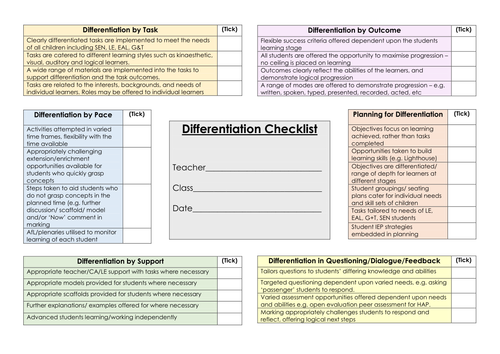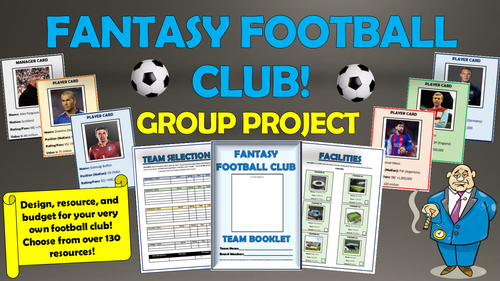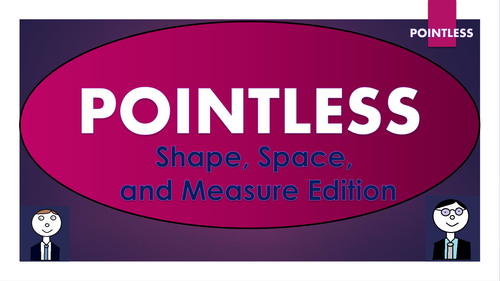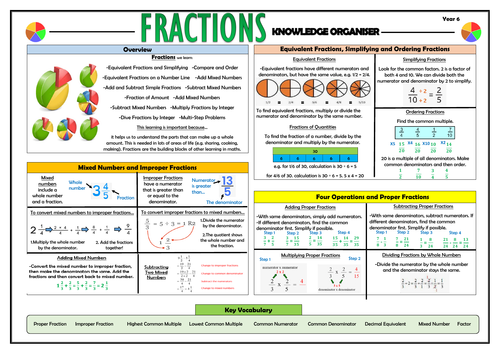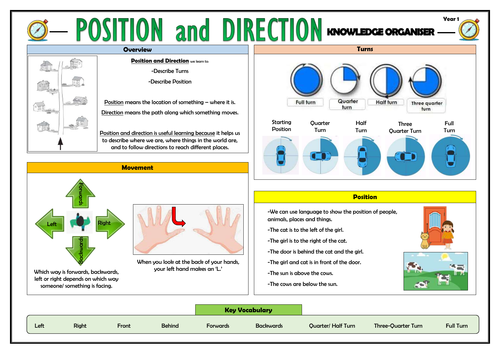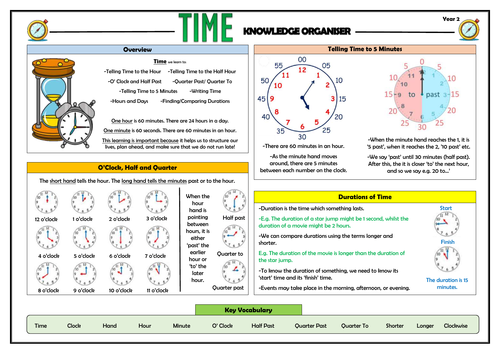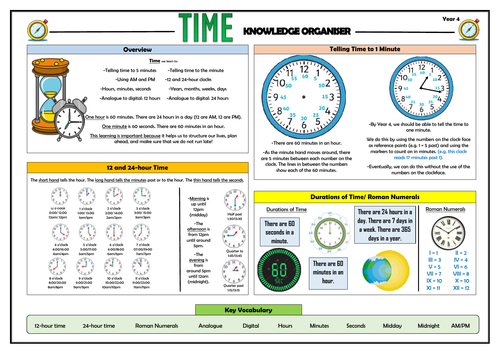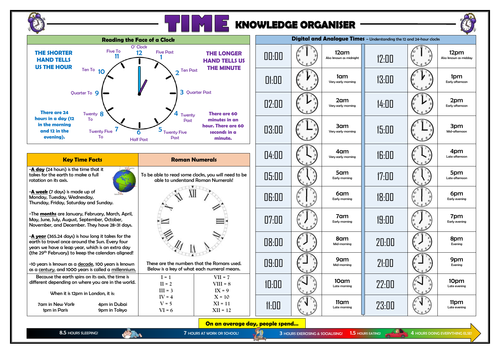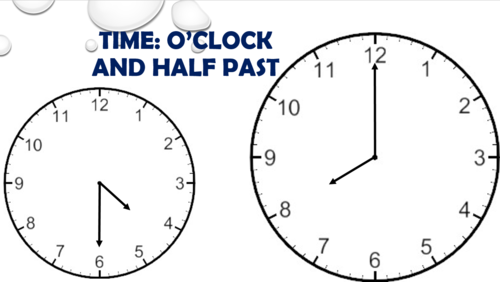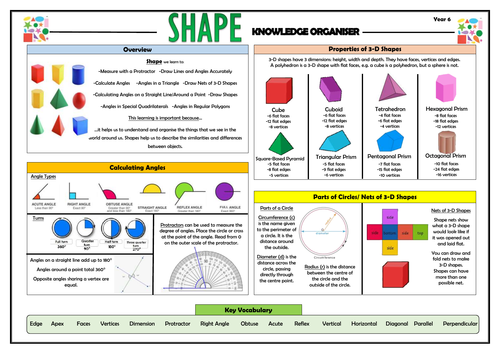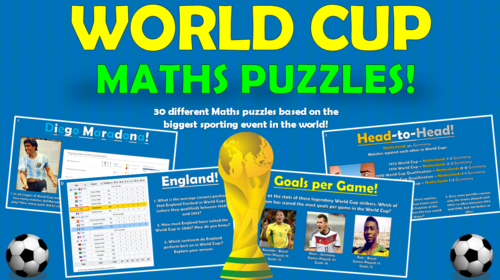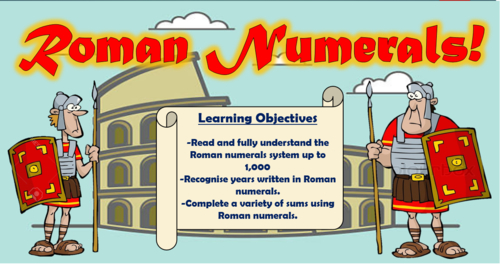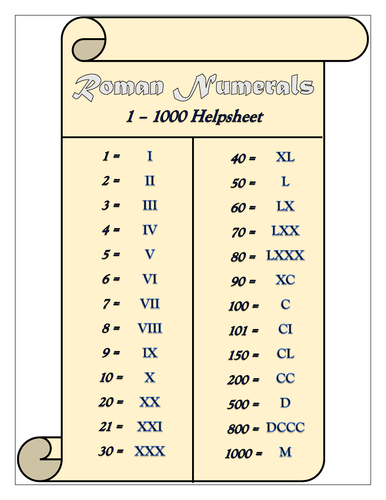
3k+Uploads
1889k+Views
2227k+Downloads
Mathematics

Learning Walk/ Teacher Development Checklists
These comprehensive checklists have been created to aid school leaders when performing learning walks with a particular focus e.g. questioning, differentiation, etc. Clearly structured and organised, they present a central idea surrounded by a breakdown of a number of its key components.
For the user, this layout provides a simple reference list of each of the desirable skills, categorised appropriately. The checklists also provide an alternative to regular feedback methods, which often focus too heavily on the standard or ‘judgement’, as opposed to being a developmental tool.
Alternatively, these are really handy for teachers looking to develop their practice in the key teaching areas listed below. Included in the pack are checklists for:
-Questioning
-Differentiation
-Utilising Resources (including support staff)
-Engagement
-Building Literacy Skills
-Planning and Expectations
-Building Learning Power
-A blank template for you to design your own based upon your own focus
Note: The checklists offer a range of desirable strategies that teachers should look to implement over time - it would be damaging to expect teachers to utilise each of these strategies in every lesson!
Many Thanks

Fantasy Football Club Group Project!
A Russian billionaire, Asman Veryrich, has approached you about setting up a new football club!
This exciting, engaging investigation activity allows students to control the direction of their own learning, through speaking, listening, discussing, and reasoning. I initially created these resources to provide something interesting for the students to engage with for their English Speaking and Listening discussions, but it has since been used across Maths, Art and Design, and PSHE departments, as well as by form groups and holiday activity groups, to build teamwork and collaboration skills.
Students get involved in all of the fun aspects of designing and setting up a new football club, including selecting a team of players, a manager, a stadium, and a training ground. They also design the team's club badge and football kits. They also need to use their skills of literacy to read and understand key evidence, and skills of numeracy to ensure that they keep their expenses within budget! What is more, groups can compete against one another to create the most successful team in the league, as all of the resources that they choose can help them to acquire valuable league table points!
Included in this resource pack are:
- Full PowerPoint lesson talking students through the process;
- An 8 page team booklet, used to create their designs and calculate their budgets;
- A pack of 96 player cards and 12 manager cards to select from (a combination of new and classic footballers are included, to ensure that this will never be outdated);
- Budget and recording sheets to track their progress;
- An A3 football pitch to strategise and select their team.
Considering the time and effort that it took to create these resources, I think that they offer exceptional value. Whenever I have used this activity before, it has taken at least 3-4 lessons, including the introduction, design process, presentations, and evaluation. I originally have used this with mixed ability Year 9 and 10 groups, but colleagues have adapted it easily for students of all key stages.
All images have been cited at the end of the PowerPoint presentation and are licensed for commercial use.

Pointless - Template to Create Your Own Games!
Template for you to create your own Pointless games - whatever subject or topic you are teaching!
Based on the popular game show 'Pointless', this resource is perfect for use as a starter activity, plenary, or revision tool. Editable, so that you can change to any other topic or change the questions/answers. Containing almost 30 slides of sound clips, engaging visuals, and suitably challenging questions, this resource is effective at both promoting engagement and enhancing learning.
There are several built-in rounds of questions to build students' understanding in your topics, including:
- Identifying terms from definitions
- Anagrams of key terms round
- Recalling the highest level knowledge.
The nature of the game ensures that this resource can challenge students of all levels.
NOTE: You can buy this resource alone, or in a bundle of 8 Pointless games, for only £1 more!
Bundle Sale

Pride and Prejudice Huge Bundle!
THIS BUNDLE CONTAINS ALL OF THE PRIDE AND PREJUDICE LESSONS, IN ADDITION TO THE COMPREHENSION ACTIVITY BOOKLET, THE KNOWLEDGE ORGANISER AND THE POINTLESS GAME!
This engaging, varied, and informative scheme of learning is designed to help students gain understanding, assessment skills, and key interpretations of Jane Austen’s ‘Pride and Prejudice.’ Made up of a wide-range of interesting and exciting lessons, students should complete this scheme having gathered vital skills in: interpreting the significant meanings of the text, understanding the writer’s ideas within the text, analysing key characters, settings, and themes, and understanding Austen’s use of language.
Stimulating, visual, and easily adaptable, these lessons provide suggested learning objectives and outcomes for students of a wide-range of abilities - The vast majority of tasks are differentiated to allow for different abilities and needs in your classroom. Each lesson loosely follows this logical learning journey to ensure that students learn in bite-size steps:
- Engaging
- Defining/ Understanding
- Identifying/Remembering
- Analysing/ Creating
- Peer or self evaluating.
All of the lessons are interactive, employ a variety of different teaching and learning methods and styles, and are visually-engaging. Whole-lesson PowerPoints, activity resources, worksheets, and lesson plans are all provided.

Pointless - Maths - Shape, Space, and Measure
Based on the popular game show 'Pointless', this resource is perfect for use as a starter activity, plenary, or revision tool. Editable, so that you can change to any other topic or change the questions/answers. Containing sound clips, engaging visuals, and suitably challenging questions, this resource is effective at both promoting engagement and enhancing learning.
There are several full rounds of questions to build students' understanding of shape, space, and measure, including:
- Naming varied 2D Shapes (triangles and quadrilaterals)
- Defining and understanding angles;
- Unscrambling the names of units of measure;
- Thinking about how many 3D shapes they can name.
The nature of the game ensures that this resource can challenge students of all levels.
NOTE: You can buy this resource alone, or in a bundle of 8 Pointless games, for only £1 more!
Bundle Sale

Year 5 Maths Complete Knowledge Organisers Bundle!
These clear, detailed and visually-appealing resources offer a complete reference point for teachers, parents and children throughout the teaching and learning of all of the Year 5 maths blocks.
Included are 9 organisers:
-Addition and Subtraction
-Area and Perimeter
-Decimals and Percentages
-Fractions
-Multiplication and Division
-Number and Place Value
-Position and Direction
-Shape
-Statistics
Each organiser contains clear sections covering the key learning areas, including an overview, the specific learning content, and important vocabulary. The knowledge is sequenced in alignment with the National Curriculum and most commonly-used mathematics schemes. Images are used to present and clarify ideas.
The resources are designed to be printed onto either A3 or A4, and are provided as both PDFs and Word versions (so that you can edit if you want to).

Y6 Fractions - Maths Knowledge Organiser!
This clear, detailed and visually-appealing resource offers a complete reference point for Year 6 teachers, parents and children when covering ‘Fractions’ in mathematics.
The content is organised into the following sections:
-Overview: Learning areas covered, key definitions, why this learning is important;
-Mixed Numbers and Improper Fractions;
-Equivalent Fractions, Simplifying Fractions and Ordering Fractions;
-Four Operations and Proper Fractions;
-Fractions of Amounts;
-Key Vocabulary.
The resource is designed to be printed onto either A3 or A4, and is provided as both a PDF and a Word version (so that you can edit if you want to). All images used are licensed for commercial use and are cited on a separate document (included).
Bundle Sale

Year 6 Maths Complete Primary Knowledge Organisers Bundle!
These clear, detailed and visually-appealing resources offer a complete reference point for teachers, parents and children throughout the teaching and learning of all of the Year 6 maths blocks.
Included are 10 organisers:
-Four Operations
-Area and Perimeter
-Decimals and Percentages
-Fractions
-Ratio
-Algebra
-Number and Place Value
-Position and Direction
-Shape
-Statistics
Each organiser contains clear sections covering the key learning areas, including an overview, the specific learning content, and important vocabulary. The knowledge is sequenced in alignment with the National Curriculum and most commonly-used mathematics schemes. Images are used to present and clarify ideas.
The resources are designed to be printed onto either A3 or A4, and are provided as both PDFs and Word versions (so that you can edit if you want to).

Y1 Position and Direction - Maths Knowledge Organiser!
This clear, detailed and visually-appealing resource offers a complete reference point for Year 1 teachers, parents and children when covering ‘Position and Direction.’
The content is organised into the following sections:
-Overview: Learning areas covered, key definitions, why this learning is important;
-Movement;
-Turns;
-Position;
-Key vocabulary.
The resource is designed to be printed onto either A3 or A4, and is provided as both a PDF and a Word version (so that you can edit if you want to). All images used are licensed for commercial use and are cited on a separate document (included).

Y2 Time - Maths Knowledge Organiser!
This clear, detailed and visually-appealing resource offers a complete reference point for Year 2 teachers, parents and children when covering ‘Time’ in mathematics.
The content is organised into the following sections:
-Overview: Learning areas covered, key definitions, why this learning is important;
-O’Clock, Quarter and Half: Hands, hours, minutes, o’clock, half past, quarter past and quarter to;
-Telling Time to 5 Minutes: 5 minute periods around the clock, understanding when to use ‘past’ and ‘to’;
-Duration: Start time, end time, comparing durations.
-Key vocabulary.
The resource is designed to be printed onto either A3 or A4, and is provided as both a PDF and a Word version (so that you can edit if you want to). All images used are licensed for commercial use and are cited on a separate document (included).

Y4 Time - Maths Knowledge Organiser!
This clear, detailed and visually-appealing resource offers a complete reference point for Year 4 teachers, parents and children when covering ‘Time’ in mathematics.
The content is organised into the following sections:
-Overview: Learning areas covered, key definitions, why this learning is important;
-12 and 24 Hour Time: Reading time in AM/PM, digital/analogue, 12 and 24 Hours Clocks
-Telling Time to 1 Minute: 1 minute periods around the clock, understanding when to use ‘past’ and ‘to’, using 5 minutes as reference points;
-Durations of Time: Seconds, minutes, hours, days, weeks, years.
-Roman Numerals;
-Key vocabulary.
The resource is designed to be printed onto either A3 or A4, and is provided as both a PDF and a Word version (so that you can edit if you want to). All images used are licensed for commercial use and are cited on a separate document (included).

Time Knowledge Organiser/ Revision Mat!
This clear, detailed and visually-appealing resource offers a complete reference point for students learning or revising knowledge relating to understanding time. It contains comprehensive sections on:
Reading the Face of a Clock - including understanding the minute and hour hands;
Key Time Facts - understanding the duration of days, weeks, months, years, etc;
Roman Numerals - to aid children in telling the time on old-fashioned clocks;
Digital and Analogue Times - looking at different ways to express the time using the 12 and 24 hour clocks, using both digital and analogue clocks;
Average Time Spent in a Day Timeline
The resource is designed to be printed onto A3, and is provided as both a PDF and a Word version (so that you can edit if you want to). All images used are licensed for commercial use and are cited on a separate document (included).
The resource could be adapted for a variety of ages and abilities, but I originally used this with Key Stage 2 children.
Bundle Sale

Ratio and Proportion KS2 Bundle!
This stimulating and comprehensive lesson bundle contains a number of engaging and detailed ‘ratio and proportion’ lessons:
Ratio and Proportion: Introduction - Students understand the key terms ratio and proportion, and use these mathematical concepts in order to solve number problems involving relative quantities and unequal sharing.
Percentage Problems - Students solve a range of problems involving the calculation of percentages, including for measures and comparisons.
Similar Shapes - Students use their understanding of ratio and scale factor to solve a number of varied and real-world similar shapes problems.
Combined, the lessons enable children to meet and exceed the following curriculum standards:
solve problems involving the relative sizes of 2 quantities where missing values can be found by using integer multiplication and division facts;
solve problems involving the calculation of percentages and the use of percentages for comparison;
solve problems involving similar shapes where the scale factor is known or can be found 4. solve problems involving unequal sharing and grouping using knowledge of fractions and multiples.
Each lesson follows a clear step-by-step learning journey, in which children learn through:
-Defining, exemplifying, and understanding the key concepts through clear and simple explanations;
-Demonstrating their understanding through well-differentiated (Bronze, Silver, and Gold Challenge) application and challenge activities;
-Applying their understanding to real-life problems, for example involving recipes;
-Gauging their own understanding through both AfL activities and self-reflection tasks.
Included in each lesson is:
Whole lesson PowerPoints - clear and precise, colourful and comprehensive;
Bronze, Silver, and Gold level award worksheets - carefully differentiated and provided in both Word and PDF;
Teacher answer sheets;
A detailed teacher lesson plan.
Student helpsheets (where appropriate)
There are also opportunities for group learning, speaking and listening, peer assessment, and whole class discussion. I originally used these resources with Year 6 (and higher-attaining Year 5) classes, however colleagues have used them for between years 4 and 9 with some minor adaptations. Some of the content really does become quite challenging (especially the Gold sheets) and so these resources could easily be used for KS3 children.
All images are licensed for commercial use, and image rights are listed on the last page of the presentation.
Bundle Sale

Lower KS2 Maths Knowledge Organisers Bundle!
These clear, detailed and visually-appealing resources offer a complete reference point for teachers, parents and children throughout the teaching and learning of all of the Year 3 and Year 4 maths blocks.
Included are 20 organisers:
Year 3
-Addition and Subtraction
-Fractions
-Length and Perimeter
-Mass and Capacity
-Money
-Multiplication and Division
-Number and Place Value
-Shape
-Statistics
Year 4
-Addition and Subtraction
-Decimals
-Fractions
-Length and Perimeter
-Money
-Multiplication and Division
-Number and Place Value
-Position and Direction
-Shape
-Statistics
-Time
Each organiser contains clear sections covering the key learning areas, including an overview, the specific learning content, and important vocabulary. The knowledge is sequenced in alignment with the National Curriculum and most commonly-used mathematics schemes. Images are used to present and clarify ideas.
The resources are designed to be printed onto either A3 or A4, and are provided as both PDFs and Word versions (so that you can edit if you want to).

Time - O'Clock and Half Past!
This stimulating, highly-effective lesson enables children to develop the knowledge and skills that they need to tell the time at both 'o'clock' and 'half past.' It is made up of a series of succinct explanations, fun tasks and logical learning steps, including:
- Playing the minute game;
- Naming the hands on the clock;
- Demonstrating their understanding through a carefully designed worksheet.
This resource pack is made up of a colourful and engaging PowerPoint presentation, a time worksheet (in both PDF and Word) and a teacher lesson plan.
By the end of the lesson, children should be able to:
- Understand what each hand on a clock means;
- Know how to tell an o’clock time;
- Know how to tell a ‘half past’ time;
- Be aware of different time values.
This lesson was originally taught to a mid-attaining Year 2 class, however with appropriate intervention it could easily be utilised for any children across KS1 and lower KS2.

Y6 Shape - Maths Knowledge Organiser!
This clear, detailed and visually-appealing resource offers a complete reference point for Year 6 teachers, parents and children when covering ‘Shape’ in mathematics.
The content is organised into the following sections:
-Overview: Learning areas covered, key definitions, why this learning is important;
-Calculating Angles;
-Properties of 3-D Shapes;
-Parts of Circles;
-Nets of 3-D Shapes;
-Key vocabulary.
The resource is designed to be printed onto either A3 or A4, and is provided as both a PDF and a Word version (so that you can edit if you want to). All images used are licensed for commercial use and are cited on a separate document (included).

World Cup Maths Puzzles!
These short and snappy puzzles are perfect for engaging all of the World Cup lovers in your class with a wide range of maths problems! Using real-life statistics from FIFA World Cups past and present, students approach a number of varied maths topics, whilst also gaining valuable information about their favourite teams and players. I have used these resources with a number of KS2 and KS3 classes, and have found that they work great for morning mental maths challenges or lesson starters/ fillers.
Some of the maths topics covered include: statistics, percentages, charts and graphs, data handling, averages, ratios, addition, subtraction, multiplication, and division, estimation and problem solving, critical thinking, and fractions. Some of the specific tasks involved include: working out the goals to games ratio of some of the best strikers, finding out which teams have the best goal difference, creating data to present performance, and comparing player statistics over different tournaments.
There are 30 tasks in total, in which each the major World Cup nations are focused upon in at least one activity each. The tasks are also separated by difficulty into ‘Beginner’,‘Intermediate’, and ‘Difficult’ tasks (refer to the B, I, or D symbols in the top left of each activity).
All images within this resource are licensed for commercial use, and images are cited on the final slide.

Roman Numerals!
This stimulating and comprehensive lesson enables students to read and fully understand the Roman numerals system up to 1,000, recognise years written in Roman numerals, and complete a variety of sums written in Roman numerals.
The lesson follows a step-by-step learning journey, in which children learn through:
- Learning the origins and the basic rules of Roman Numerals through clear and simple explanations;
- Demonstrating their understanding through well-differentiated application and challenge activities;
- Applying their understanding to complete sums and scribe important historical dates using Roman numerals;
- Gauging their own understanding through both AfL activities and self-reflection tasks.
Included is:
- Whole lesson PowerPoint - clear and precise, colourful and comprehensive;
- Bronze, Silver, and Gold level award worksheets - carefully differentiated and provided in both Word and PDF;
- Teacher answer sheets;
- A help-sheet to support students who find the subject content more difficult;
- A detailed teacher lesson plan.
There are also opportunities for group learning, speaking and listening, peer assessment, and whole class discussion. I originally used these resources with year 5 and 6 classes, however colleagues have used them for between years 3 and 9 with minimal adaptations.
All images are licensed for commercial use, and image rights are listed on the last page of the presentation.

Pride and Prejudice - Elizabeth and Darcy's Relationship Graph Task!
This interesting task provides students with an opportunity to track Elizabeth and Darcy's relationship throughout 'Pride and Prejudice.'
Students first rate Elizabeth and Darcy's feelings for one another at different points in the text on a 1-10 scale, plotting their rating on the graph. They then justify the rating with an explanation and textual evidence, in the table beneath.
It's great for helping them to see how the relationship develops over the course of the text, and also offers a novel cross-curricular link with maths.
Shameless plug - if you like this resource, please take a look at my paid 'Pride and Prejudice' resources, available as single lessons or in the lesson bundle. Thanks!

Roman Numerals 1-1000 Helpsheet!
A quick and easy helpsheet to aid students with deciphering Roman Numerals between 1-1000, written in the style of a Roman script!
Includes both a Word and PDF version.

